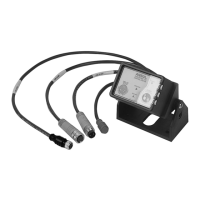SECTION 4 – SYSTEM PLANNING
2014-APR-30 REV. 0 PAGE 4-1
HAZARD IDENTIFICATION BASIC PLANNING
Individuals responsible for planning (or designing) a CHECK-
FIRE 110 Detection and Actuation System must hold current
ANSUL Certification from an ANSUL A-101 and/or LVS train-
ing program. In addition to the certification, planners must
research:
Fire Hazard Locations
temperature or sparks) and fuel (flammable materials) may be
-
Examples of ignition (heat) sources:
Examples of fuel or flammable materials (may cause rapid
buildup or spreading of fire):
glycol, steering fluid, etc.)
danger of malfunctioning components.
Other Considerations
than anticipated. Radiation, sparks, or conduction through
not normally exist. Hand portable fire extinguishers should be
an escape route.
-
-
rience enabling them to identify locations of previous fires as
fuel leak points, or ruptures of certain hydraulic fittings or
hoses.
Normal operating temperatures in excess of the detector
detectors for automatic detection and system activation.
Equipment Shutdown
intensity of the fire, re-ignite the fire, or negatively impact the
discharge of fire suppression agent such as:
shutoff valves should also be considered to mitigate fire propa-
gation and/or re-flash.
-
-
sion system operation. Consult the vehicle manufacturer for
-
CHECKFIRE 110
Detection and Actuation System

